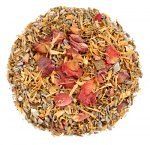Professor Barff has discovered a new antiseptic for preserving flesh and other fresh foods liable to decay. It is well known that boracic acid is an excellent preserver, but it has the draw back of not being easily soluble in water, and hence is difficult to apply in a liquid state to the purpose in question. Professor Barff has, however found a promising solvent in glycerine, and the mixture of these two substances, or "boro-glyceride" as it is called, is the antiseptic discovered. A quart of cream treated with an ounce of boro-glyceride keeps quite good even in the hottest weather, and a quantity of it has been sent to Zanzibar though the furnace of the Red Sea without impairing its sweet qualities. Fresh fruit, guavas, tamarinds, green sugar-cane, as well as raw turtle and pigeon , were sent from Jamaica preserved in the fluid, and proved to be good and wholesome, retaining still their characteristic flavours. Professor Barff proposes to save railway carriage on milk by condensing it in the country and mixing it with boro-bloyceride, so that it has only to be mixed with water when required for use. The meat now wasted on the South American plains could also be preserved for transport to the coast and the European markets. Beef-tea, raw beef juice, which is recommended by medical men for some conditions of the digestive system, soups, and other delicacies can be preserved for any length of time by the new substance. When introduced into liquids capable of fermentation it prevents the process, unless the latter has already begun, when it only exercises a moderating influence.
Professor Barff is also the inventor of the plan for coating iron with a rustless skin of oxide of iron, and we may add here that frying pans, saucepans, and other vessels usually made of copper, are now made of iron treated by the Bower-Barff process of preventing rust, and found very convenient. In working this process it has been found that the cost of enamelling the iron with the magnetic oxide forming the rustless coating is much reduced by first oxidising the articles before enamelling them. Further, it has been discovered that a skin or bloom of all the more ornamental metals can be given to the grey surface of the rustless coating, by simply brushing it over with a wire brush of the metal required to be deposited, whether bronze, brass, copper, silver, nickel, or gold. The particles of the brush rubbed off by friction fill up the pores of the coating, and by slightly heating the article they are fixed there.
Cassell's Family Magazine 1883.
Regroup!
6 years ago




No comments:
Post a Comment
comments are very welcome, but if you need a reply, please do email me instead because sometimes I am very busy and may miss a comment or two.